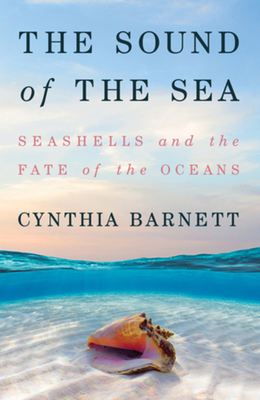The Sound of the Sea
- By Cynthia Barnett
- W.W. Norton & Company
- 432 pp.
- Reviewed by Gretchen Lida
- August 6, 2022
What can the beachy treasures tell us about the health of our planet?

In 1644, renowned Dutch tulip breeder Abraham Casteleyn died of unknown causes. Along with the bulbs for his best plants, he also made provisions in his will for his collection of over 2,000 seashells. Casteleyn had conchylomania, or “shell madness.”
He was far from alone in his obsession with these mesmerizing, once-living fragments of calcium carbonate. From prehistoric women stringing bits of shell together to a modern-day blind scientist who crawls on his hands and knees across beaches feeling for new specimens, seashells have always held a particular fascination for humans.
In her new book, The Sound of the Sea: Seashells and the Fate of the Oceans, environmental journalist Cynthia Barnett tries to unravel the Siren-like spell that shells have cast on us and what we can learn from those shells as our climate changes.
The Sound of the Sea is exhaustively researched, weaving together history, biology, nature writing, and the personal histories of those who, throughout time, have been especially influenced by seashells. Barnett layers and presents her data in a dizzying and impressive way. When I flipped to a random page, I counted no fewer than 15 separate facts in just a few paragraphs.
The book doesn’t read like a dry recitation of information, though. Instead, each idea feels boundaryless and bounces from one to the next — more Walter Benjamin than Aldo Leopold.
Every chapter is organized by theme and features a shell representing that theme. For example, in “Shell Money,” Barnett explores the history of the cowrie, a small, round, white shell that we now often see in hemp bracelets at tourist shops, but which was once a common form of currency. In the 18th century, in fact, cowries were used to purchase enslaved people in West Africa.
However, as do other chapters, “Shell Money” jumps from place to place and idea to idea. Though centered on the Maldives and the Muslim merchants who brought Islam to that island nation, the chapter also ventures from ancient Rome to India before arriving in the 20th century, where it touches on, among other things, the actions and influence of John F. Kennedy.
This wandering style rewards readers who embrace it but may frustrate those seeking a more straightforward, linear approach. Still, the use of “interconnectedness” as an organizational scaffold is a growing trend in both nature and travel writing. Robert Macfarlane’s wildly popular Underland and Cal Flyn’s Islands of Abandonment similarly intersperse dense ideas amid passages of lyrical prose. All of which is to say, despite its oceanic subject matter, The Sound of the Sea is no beach read. While it is beautiful, I wonder if it’s accessible to the average reader. (I also wonder if accessibility should even be a consideration.)
Along with the facts, Barnett employs tiny narratives to give shape to each chapter. Sometimes, these include looks at historical figures we know like Marie Antoinette or Aristotle. Other times, she tells the stories of how contemporary experts fell under the spell of a given shell. One of these is Mandë Holford, a chemist specializing in mollusks who developed a love of shells when her mother would drop her and her sisters off early in the morning at the American Museum of Natural History in New York City.
Barnett works hard to avoid being Eurocentric in her writing; the tales of the shells and people she recounts span the globe. Both ancient Indigenous wisdom and the newest scientific conclusions often sing harmonies in the same chapter.
Although the importance and appeal of shells is made clear throughout the book, “the fate of the oceans” part of its subtitle is harder to pin down in the text. Yes, the work discusses climate change, pollution, and extinction, but it does so at a whisper when it should be screaming. The same July week The Sound of the Sea hit the shelves, the “Eye of Fire” pipeline explosion occurred in the Gulf of Mexico. The fiery images saturating the internet were awful, but the most horrific part was how everyday such ecological disasters now feel.
It’s true that good politics doesn’t always make for good writing, but during this time of climate collapse, don’t nature writers have a responsibility to sound the alarm more aggressively than Barnett does here? Yes.
Still, the inspiring of wonder and awe in readers is another important tool of the environmental writer. Suppose after reading The Sound of the Sea, we begin to appreciate a conch, a nautilus, or another shell in a deeper, more meaningful way. Maybe that appreciation will prompt us to care more — and fight more — to protect it.
[Editor's note: This review originally ran in 2021.]
Gretchen Lida is an essayist and an equestrian. Her work has appeared in the Washington Post, the Rumpus, the Los Angeles Review of Books, and many other publications. She is a contributing writer to Horse Network and the Independent and is working on her first book. She lives in Chicago and is still a Colorado native.

_80_120.png)